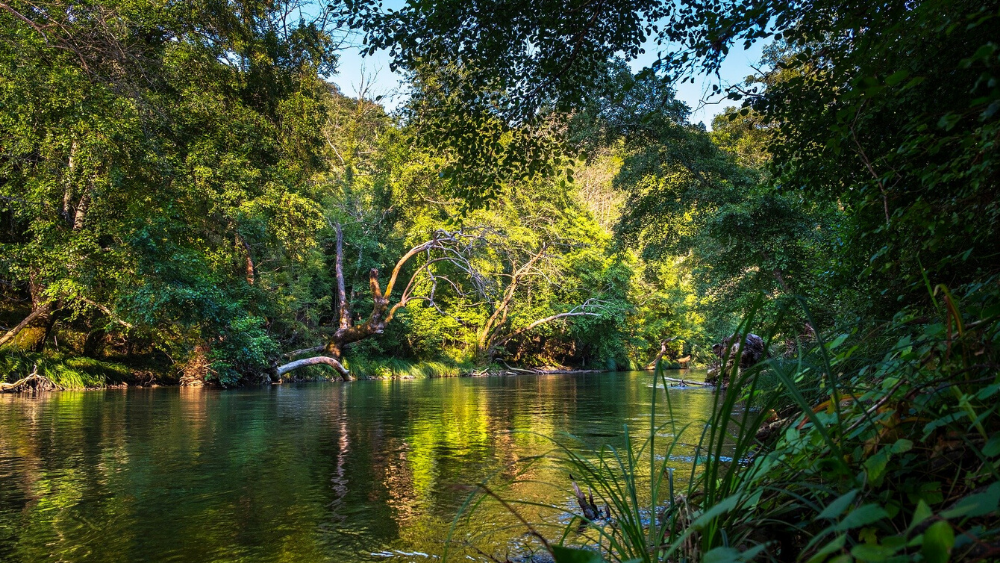Insights
INSIGHTS
All Topics
My Account
How environment and conservation charities are using tech to drive change
03 Feb 2020by Christine Chiu
We examine how environment and conservation charities are using cutting-edge tech and digital innovation to drive change and achieve their mission.
Environment and conservation charities have had their profiles lifted through intense media coverage on climate change, Greta Thunberg’s call to action, and Australia’s wildfire outbreak. While many are already on our radar for digital innovation, here we take a look at some of the most powerful conversations in social media and mobile, and how environment charities have been using tech to supplement their calls for action.
Small tech charities are keeping green shoppers on cause
Smaller, tech-focused charities are keeping shoppers closer to their green principles than ever with the explosion of shopping apps. The charity digital strategy is simple – being on mobile phones means that supporters can easily access information when, and wherever they are shopping.
Buycott, a UPC scanner app helps those dedicated to making changes ensure that their purchases are sustainable and fair. The app works by compiling an extensive, global database of barcodes linked to shops and manufacturers. By scanning an item’s barcode, users can decide based on research whether to continue with their purchase. To help motivate causes, buycotts can be linked together to form global campaigns – items are linked together on the platform to pursue bans on animal testing, GMO production, and unsavoury manufacturing techniques. Other more focused shopping apps include Ethical Barcode, which helps grocery shoppers take charge of where their food is coming from.
Powerful images as part of digital strategy connect charities with cause
Environmental charity Friends of the Earth uses Instagram to support the climate action campaign. Recent images include motivational swathes of landscape and sea destruction in an outline of a person – highlighted how eco-anxiety can be harnessed to action. Digital leaders have used these emotive video images to capture the new trend of eco-anxiety and how we can work together to save the planet.
Spectacular footage has caused donations to spike for Australia’s marsupial victims. Photos of burning forests, incinerated wallabies and scorched koalas online have ratcheted up into a social media grassroots movement. Major environment and wildlife campaigns have resulted from the ground up. Through social media campaigning and video content, the WWF-UK Australia raised over £1 million in a week, demonstrating the power that images and content have in corralling around causes.
Fashionistas slow down fast fashion
Fast fashion has helped send over 235 million items to the landfill each year, according to the London Sustainability Exchange. Hard to ignore, apps are coming together to help slow down, recycle, and encourage better usage. Good on You is a sustainable shopping app which helps reduce waste. Endorsed by ethical fashion-forward celebrity Emma Watson, the app helps inform audiences on which brands are sustainable by rating, in addition to an evaluation of the materials used.
Corporate partnerships help environment charities maximise expertise
Working on the forefront with environmental and conservation charities is Google, showing how corporate charity partnerships can work. Perfect for charity digital leaders looking for a fundraising and media platform, One Today features a menu of conservation and environment charities. Each photo advertisement is crafted to suit the cause. The Nature Conservancy’s Restore Panda Habitat shows an endearing panda with its babe and includes a suggested donation amount for its habitat. For charities on the platform, transaction fees are waived by the tech giant. For local charity leaders, Google also has an AI Impact Challenge which has a $ 25 million grant funding pool for charities looking to use AI to address local environmental and social issues.
Charity apps showcase charity partnerships and collaboration
From global to local, charity apps have helped address some of the world’s most pressing challenges. But for charity digital leaders looking to build up local knowledge of the environment, exemplary apps have helped volunteers and users mobilise.
Partners the Bumblebee Conservation Trust, The Royal Horticultural Society, Coventry University, Garden Organic, and Hozelock have come together under a public-private citizen science tech venture. The partners have launched Blooms for Bees, which includes an interactive map and mobile phone app. The app encourages users to get outside, observe plants, and take videos/photos of bees to be uploaded for verification. The partners then work together to identify the bee species and connection with local flowers. Data is then collected and used by their digital experts and scientists to assist the conservation effort.
Similar to the Blooms for Bees technology, the British Trust for Ornithology also has an app to engage supporters. Project developers include the RSPB, BirdWatch Ireland, BirdLife International, the Scottish Ornithologist’s Club, and the Welsh Ornithological Society. The project BirdTrack allows supporters to download an app to help manage individual bird sightings. For rare birds, records are sent to the partners for verification. Again, the big data is used to improve conservation efforts in targeted geographies.
More on this topic
Recommended Products
21 Feb 2025by Ioan Marc Jones
How charities stopped centring service users
20 Feb 2025by Laura Stanley
The simplest way to collect contactless donationsSponsored Article
Our Events
Charity Digital Academy
Our courses aim, in just three hours, to enhance soft skills and hard skills, boost your knowledge of finance and artificial intelligence, and supercharge your digital capabilities. Check out some of the incredible options by clicking here.


















